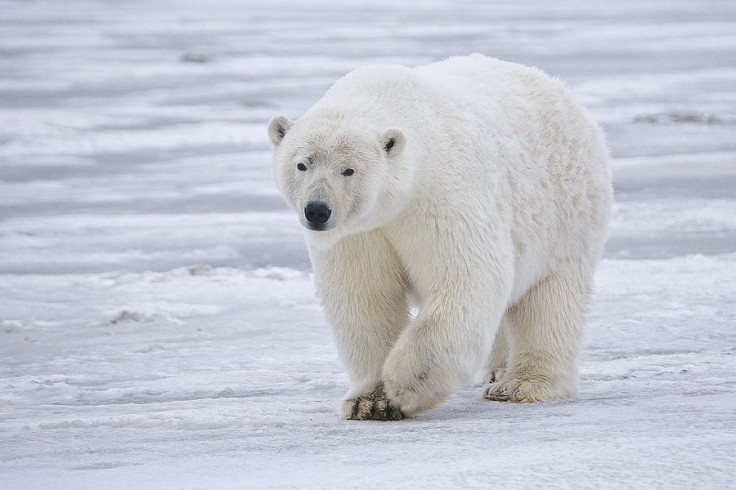Polar Bears ‘More Resilient’ To Climate Change Than Thought, Can Survive Ice Melt By Modifying Diet

Polar bears are regularly thought of as being among the animals most burdened by climate change, often described as starved creatures floating aimlessly on shrinking icebergs. But new research is depicting the Arctic’s greatest predator as one that can actually adapt well to a changing climate, at least when it comes to modifying its diet.
Recent research of polar bears’ diets has produced a vast body of evidence that the bears are turning to other sources of sustenance in times when seals, its preferred prey, are hard to come by. Scientists have spent some time tracking Arctic polar bears’ eating habits while they hunt. According to a series of papers published last year in various ecology journals, polar bears ate everything from snow geese – including their eggs – to caribou, grass seeds and berries.
"What our results suggest is that polar bears have flexible foraging strategies," Linda Gormezano, a biologist at the American Museum of Natural History in New York and a co-author of several of the papers, told NBC News.
A polar bear’s favorite meal is indeed seal pup. The white predator stalks its prey by roaming the edge of the sea ice and waiting for seals to pop their unsuspecting heads out of the water. But with the ice shrinking in parts of the Arctic, and ice break-up occurring as much as three weeks earlier in some areas than it did 30 years ago, the bears find it increasingly difficult to nab a tasty seal.
“There is little doubt that polar bears are very susceptible as global climate change continues to drastically alter the landscape of the northern polar regions,” Robert Rockwell, a researcher in the American Museum of Natural History’s department of ornithology and co-author of a Dec. 2013 study on polar-bear diets, said in a statement. “But we’re finding that they might be more resilient than is commonly thought.”
Rockwell’s team studied polar bear scat in western Hudson Bay in Manitoba, Canada, to determine what the polar bears in that region have been eating. They discovered that plants found in any given pile of polar bear poop were usually the same, suggesting the bears conserve energy by eating what’s right around them. Mothers and cubs, who travel furthest inland, ate berries. Adult males, who tend to stick to the coasts, mainly ate shoreline grass seeds.
“Our results suggest that polar bears are foraging opportunistically in a manner consistent with maximizing intake while minimizing energy expenditure associated with movement,” the authors wrote. “The frequent mixing of plant-based carbohydrate and animal-based protein could suggest use of a strategy that other Ursids employ to maximize weight gain.”
According to the study, published in the journal BMC Ecology, polar bear scat contained between one and six food types, with the average scat having 2.1 food sources. Eighty-five percent of the scat had a least one type of plant.
“Flexible foraging strategies, such as prey-switching, omnivory and food mixing, are key to surviving in a labile and changing environment,” the authors noted. “Polar bears in western Hudson Bay are versatile predators that use all of these strategies as they seasonally exploit resources across trophic levels.”
But experimenting with different food sources isn’t always a good thing. According to NBC News, researchers noted bears chowing down on other, less nourishing items, like the seats of snow mobiles, lead acid batteries or even the hydraulic fluid drained from a forklift.
It’s hard to say at this point how the polar bears, now considered a threatened species after their numbers have declined drastically over the past century, will fare in a melting Arctic environment. Polar bears rely on seals to build up their fat deposits, which they survive on during the summer and early fall when food is scarce. If the bears are forced to go without this staple food source, they’ll have to find another suitable alternative. And for a predator that can weigh as much as 1,500 pounds, berries and grass aren’t going to cut it.
© Copyright IBTimes 2024. All rights reserved.






















